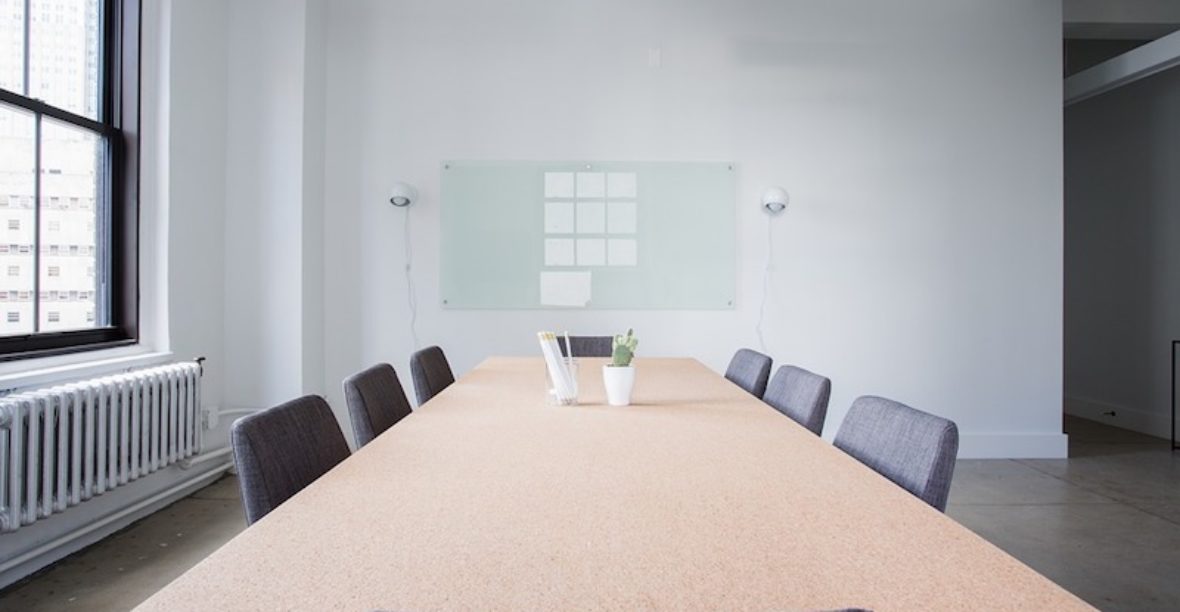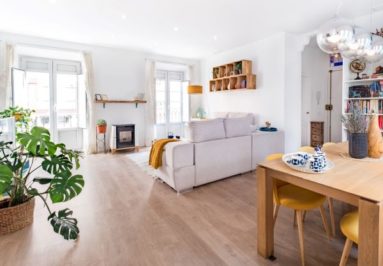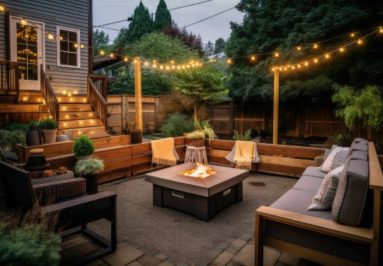The conference room plays host to nearly all company activity, from team meetings to collaborative projects to visiting clients, it’s always bustling. Conference rooms are an integral aspect of most modern offices, so why are they so often under-looked?
What if your conference room was a sanctuary? A place where the buzz of printers, Xerox machines, and chatty colleagues was silenced, and conversations held inside could be guaranteed private. Keep reading to learn how sound treatment can turn your conference room into the professional and confidential space your business needs.
Addressing Echo in Conference Rooms – Conference Room Sound Panels

Before worrying about how to soundproof the conference room, you need to guarantee that people will be able to hear each other within the conference room! Teleconferencing is increasingly popular, but any reverb beyond 1.3 seconds makes it very difficult to hear on the other end of the phone.
Acoustic wall panels are commonly used in conference rooms with too much reverb, because acoustics aren’t typically considered during conference room design. Many companies want their conference rooms too look very high-end, which may mean glass walls, tile floors and high ceilings, but all of these reflective surfaces will result in excessive echo.
To prevent this, treat the space with an acoustical treatment that limits the echo in the room. This is most often done with the use of Acoustic Wall Panels, which can be hung on the ceiling or walls.
Soundproofing Conference Room Walls
For conference rooms with typical walls, acoustical wallpaper may be considered. Developed by acoustical experts, this material will seriously bulk up thin walls. The easy-to-install wallpaper can be hung and then painted over for a clean, concealed fix.
When using acoustical wallpaper or MLV, install another layer of drywall over the layer of MLV to add extra mass to the wall assembly. This will be much more effective than just adding the layer of drywall, and can help reduce the amount of outside noise getting into you conference room by about 50% or more.
If your office opts for a glass-walled conference room, not to worry. Noise likely enters and escapes through the doorway, so you may want to hang some sound-blocking panels over the frame. These panels are designed to reduce noise flow between rooms by deflecting sound waves.
Ceiling Soundproofing for Conference Rooms
If you’re located below another office or business, chances are you’re getting pretty sick of hearing their every footstep. Noise coming from above can be exceptionally distracting. Solve this problem by installing soundproofing tiles to your ceilings. Drop Ceiling Noise Blokker are composed of three separate layers designed to block sound and absorb echo.
This same product can also be placed above an ACT grid, common throughout commercial office spaces, to keep sound from flanking between offices and corridors. Without it, if walls between offices to not go to deck, the sound can easily travel between rooms, which can make it so others can hear private meetings, or others are disturbing important meetings.
Soundproof Meeting Rooms Glass Walls & Windows

Windows are great in any workspace – the natural light they allow for makes for a much happier workplace. Unfortunately, street noise can easily slip through most windows, letting in a lot of distracting noise. To combat this, you can hang soundproofing curtains over your windows. These curtains will block most outside noise from entering, greatly enhancing the sound quality of your conference room.
Soundproofing and Acoustic Solutions for Conference Rooms
If your conference room is feeling a little lack-luster, you may need more than a few new swivel chairs to solve the problem. Soundproofing can provide an instant upgrade to any conference room, showing employees and clients that you’re serious about your business.
In order to properly soundproof and acoustically treat a conference room, simply follow our steps below:
- Acoustically treat the conference room with acoustic wall panels to reduce echo and improve sound quality for meetings and conference calls
- Soundproof conference room walls with either MLV, or soundproof curtains for the glass walls
- Use a ceiling soundproofing solution to avoid sound flanking from adjacent offices and the floors above, and prevent eavesdropping on important meetings
- Soundproof conference room windows with soundproof curtains to prevent outside noise such as traffic from disrupting meetings
Has soundproofing helped improve the quality of your business’s conference room? Let us know!





